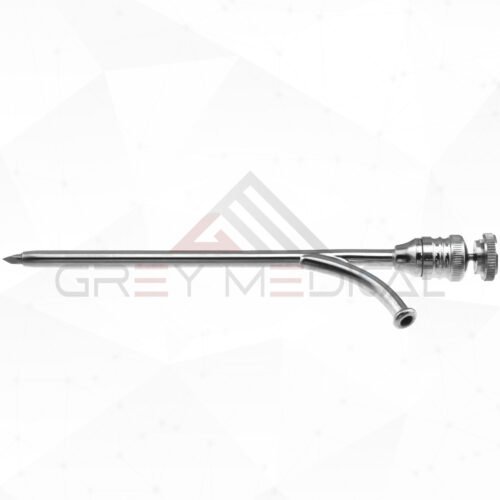views
The Essential Role of Medical Retractors in Surgical Procedures
Medical retractors are indispensable tools in modern surgical practices. These instruments, expertly designed to hold back tissue and expose crucial areas, significantly improve visibility and access during surgical procedures. By assisting surgeons in performing precise and effective interventions, medical retractors not only enhance surgical outcomes but also ensure superior patient care. Their relevance spans across specialties, making them a staple in operating rooms worldwide.

What Are Medical Retractors?
Medical retractors are specialized surgical instruments used to isolate and secure tissues or organs to create an unobstructed field of vision. Whether a procedure involves the abdomen, chest, or delicate neurological sites, retractors provide the framework necessary for accurate surgical handling. They are meticulously engineered to maintain tissue integrity while facilitating a clear operating space, ensuring the safety and success of complex procedures.
Crafted from stainless steel or other durable materials, retractors come in various designs tailored for specific surgeries. The underlying purpose remains the same—to offer surgeons stable, precise, and convenient access to the surgical site.
Types of Medical Retractors
Medical retractors are categorized based on functionality, surgical specialty, and design of blades or handles. These variations accommodate the unique needs of different medical disciplines while ensuring optimal outcomes in each procedure.
Manual retractors, for instance, require direct operation by the surgeon or an assistant. These are often used in simpler procedures or where flexibility is essential. On the other hand, self-retaining retractors have locking mechanisms that keep them in place without constant manual adjustment, freeing up vital resources in complex surgeries.
For highly specialized procedures, such as neurosurgery or orthopedic interventions, retractors are often tailored further. For example, the Gelpi retractor is a common choice in spinal and muscular operations due to its pointed, inward-curving blades that maintain a firm grip on soft tissue. Similarly, rib spreaders are vital in thoracic surgeries for gently separating the ribs to expose the chest cavity. This diversity underscores the adaptability of retractors to enhance surgical proficiency across disciplines.
Applications Across Surgical Specialties
Retractors are integral to a variety of surgical fields, from general surgeries to more niche specialties. Their inclusion in procedures goes beyond merely improving a surgeon’s view—it directly impacts the depth and accuracy of the intervention.
Take orthopedic surgeries as an example, where retractors are used to reveal bones and joint structures while minimizing soft tissue damage. Neurosurgeons, in contrast, rely on finely tuned retractors designed to access the brain or spinal cord with precision. Similarly, in abdominal surgeries, retractors like the Balfour are commonly employed to allow access to deep areas of the abdominal cavity without excess strain on surrounding organs.
The role of retractors in minimally invasive surgery is particularly noteworthy. Devices such as laparoscopic retractors are essential in creating the small, well-defined spaces surgeons need to maneuver. Their functionality ensures reduced patient trauma, quicker recovery times, and lower postoperative complication risks. This utility highlights the progressive evolution of retractors as they adapt to advancements within the medical field.
Importance in Enhancing Surgical Outcomes
The precise manipulation of tissues during surgeries is intrinsic to safe and successful outcomes. Medical retractors take on this crucial task, mitigating risks such as unintended tissue damage or prolonged operation times. With their assistance, surgeons can focus entirely on the core of the procedure, ensuring better performance and patient safety.
Furthermore, retractors promote favorable recovery experiences. By minimizing unnecessary tissue interference during surgery, they contribute to smaller scars, reduced pain, and faster healing. This, in turn, leads to more satisfied patients, reflecting the underlying purpose of advancing surgical care.
Innovation in Medical Retractor Design
Advancements in medical technology have transformed the design and functionality of retractors, aligning them closely with the needs of modern surgeons. Ergonomic handles, custom blade shapes, and even hybrid models integrated with illumination or suction capabilities now dominate the market. These innovations not only enhance the tool’s performance but also elevate the surgeon’s ability to perform intricate procedures under challenging conditions.
Many modern retractors are now disposable, catering to the demand for hygiene and convenience in fast-paced surgical environments. This ensures compliance with strict sterilization protocols while eliminating issues related to cross-contamination. Additionally, lighter materials and improved mechanics mean reduced strain for surgeons during prolonged use, further showcasing how this instrument evolves in line with surgical trends.
The Future of Surgical Excellence
With clinicians continually pushing the boundaries of medical science, tools like medical retractors are increasingly critical. Their contribution to achieving precision and efficiency establishes them as cornerstones of global healthcare systems. By adapting to the challenges of both routine and advanced procedures, medical retractors symbolize the innovative intersections of tradition and technology.
conclusion
Medical retractors are far more than standard operating room tools; they are indispensable allies in ensuring superior patient outcomes. From facilitating access to critical surgical sites to advancing procedural safety and efficiency, these instruments redefine the scope of modern surgery. As technology progresses, the role of retractors will only grow, empowering surgeons and improving patient care across diverse medical landscapes. Their value remains a testament to the intersection of engineering ingenuity and clinical expertise.










